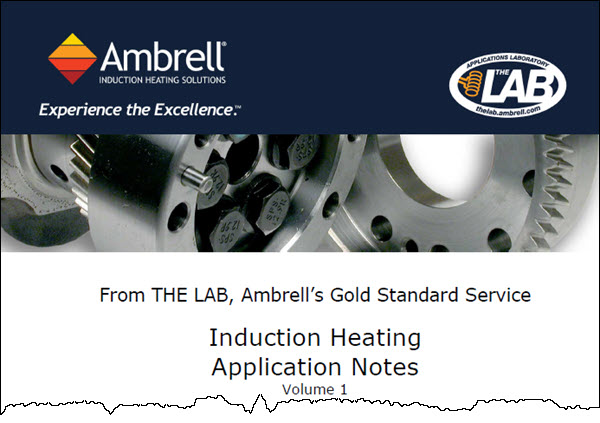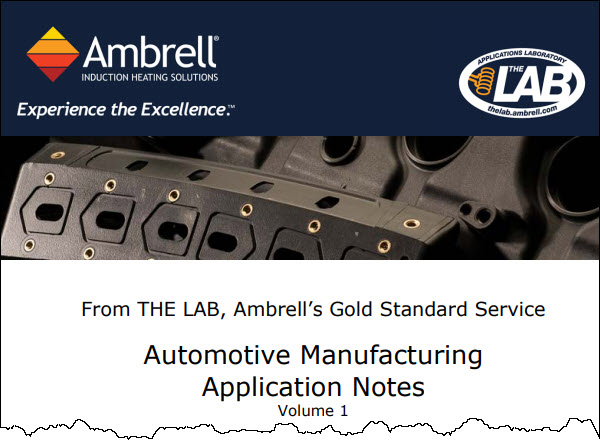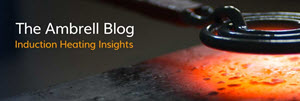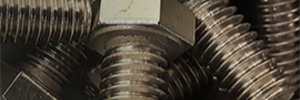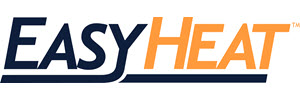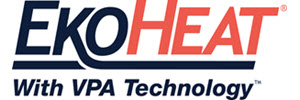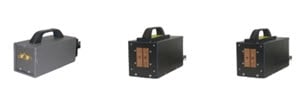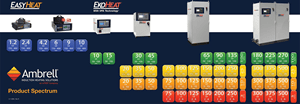Induction in Fastener Manufacturing
- Home
- Applications
- Fastener Manufacturing
How is induction heating used in fastener manufacturing?
Production rates are improved using induction to heat the fasteners for heading, thread rolling and thread patching processes. Fasteners are heated quickly, efficiently, and with maximum repeatability.
Induction generates an electromagnetic field in a work coil that induces currents in the conductive material of a workpiece placed within or near the coil. Friction from these currents elevates the temperature of the fasteners being heated.
Benefits of induction in fastener manufacturing
Induction heating meets tight production tolerances with precise localized heat to small areas creating pinpoint accuracy, while increasing production rates with faster heating cycles. It reduces defect rates with repeatable, reliable heat and eliminates variability from operator-to-operator, shift-to-shift. Induction also maintains metallurgical characteristics of the individual metals.
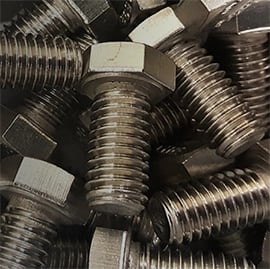
fastener heating Application Notes
Select from our collection of fastener heating notes, taken from years supporting our customers. Read how we helped to solve their process heating challenges.
 Heating rods for thread rolling to create fasteners
Heating rods for thread rolling to create fasteners
This is part of an automated line. The system was sized and the coil was designed to ensure 45 parts per minute can be heated to the temperature required for hot forming.
 Heating threaded area of fastener
Heating threaded area of fastener
Induction heating is localized only to the threaded area, decreases production time with a flameless process and delivers even distribution of heating
 Annealing Copper Wire Connectors
Annealing Copper Wire Connectors
To anneal electrical crimp contacts of different dimensions. The client took advantage of THE LAB’s expertise to prove out their process in a way that met their time, quality and budgetary requirements.
 Heating fastener blanks for thread rolling
Heating fastener blanks for thread rolling
Induction heating provides faster cycle times and extended tool life with preheat step, fands-free heating that involves no operator skill for manufacturing
 Hot Heading Steel Wire: Create Screws
Hot Heading Steel Wire: Create Screws
Preheating steel wire before hot heading to create a screw; they wanted to switch from cold heading to extend tool life.
 Preheating steel rods for forging in a fastener manufacturing process
Preheating steel rods for forging in a fastener manufacturing process
The client targeted an aggressive cycle time, achieve thanks to our process design and the efficiency of induction heating; fast heating means greater manufacturing throughput
 Preheating steel rods for forging in a fastener manufacturing process
Preheating steel rods for forging in a fastener manufacturing process
The client targeted an aggressive cycle time, which Ambrell was able to achieve thanks to its process design and the efficiency of induction heating
 Heating Steel parts for hot heading
Heating Steel parts for hot heading
Induction heating provides hands-free heating that involves no operator skill for manufacturing, direct application of the heat on the work piece with precision and consistency, even distribution of heating with low pressure and minimal residual part stress
 Band annealing on Titanium fasteners
Band annealing on Titanium fasteners
Our bar-end annealing systems provide operating frequencies from 400 kHz for hot-heading of small diameter fasteners to 2 kHz for larger cross-section beams or bars. Systems can be incorporated with pick-and-place robotics to deliver a flameless process,with heating limited to a specific area.
Induction heating provides hands-free heating that involves no operator skill for manufacturing, elimination of springback effect, extended die life, better grain flow and microstructure with even distribution of heating
 Pre-heating three rods for hot heading
Pre-heating three rods for hot heading
Induction heating provides improved production rates with minimal defects, reduced need for post production tempering and heat treating and even distribution of heating
 Heating stainless steel rod for hot forming
Heating stainless steel rod for hot forming
Induction heating provides for hands-free heating that involves no operator skill for manufacturing, improved production rates with minimal defects, low pressure and minimal residual part stress with even distribution of heating
 Pre Heating Mold Release Push Rod For Forging
Pre Heating Mold Release Push Rod For Forging
To heat the ends of steel rods to 1800°F using induction prior to a forging operation. Processing of the rods includes heating, pressing in a two part die to forge the push rod end, and a final induction heating in a channel coil to temper the rods and relieve the forging stresses.
 Pre-heating single rod for hot heading
Pre-heating single rod for hot heading
A seven turn helical coil is used to heat the rod. The rod is placed inside the coil and power is applied for two seconds providing enough heat to penetrate the inner core
Induction heating provides for hands-free heating that involves no operator skill for manufacturing, improved production rates with minimal defects, low pressure and minimal residual part stress with even distribution of heating
 Pre Heating Steel For Forging Horse Shoes
Pre Heating Steel For Forging Horse Shoes
Induction forging provides for hands-free heating that involves no operator skill for manufacturing, improved production rates with minimal defects, low pressure and minimal residual part stress with even distribution of heating
Why use induction for fastener heating?
To improve production rates and fastener quality, fastener manufacturers use heat in their heading, threading and patching production processes. With induction heating, fasteners are heated quickly, efficiently, and with maximum repeatability.
Is induction appropriate for hot heading?
Induction heating is commonly used for preheating bolt and screw heads prior to forging, offering many benefits for the warm or hot heading processes.
Can it be used to cure paint or powder?
Induction heating is ideal for curing the paint or powder material used in thread patching. It can greatly improve thread patching productivity by rapidly heating fasteners up to 300° C for flowing the paint or powder coating.
What is thread rolling?
Thread rolling pushes the material into shape against a thread roll die rather than cutting, thus reducing material waste and stress to the fastener. Thread rolling produces a higher quality product than cutting.
Can induction be used for thread rolling?
Induction heating can easily be integrated into the thread rolling production process and has proven to be a more rapid and consistent method of heat that leads to superior repeatability and increased production efficiency in high-volume parts manufacturing.
Other fastener heating Resources:
Our Induction fastener heating Systems and Equipment
AMBRELL CORPORATION
1655 Lyell Avenue
Rochester, NY 14606
United States
F: +1 585 889 4030
AMBRELL B.V.
Holtersweg 1
7556 BS Hengelo
The Netherlands
AMBRELL Ltd.
Unit 6, Space Business Centre
Tewkesbury Road
Cheltenham, GLOS, GL51 9FL
United Kingdom
F: +31 546 788 154


 Heating wire for hot heading
Heating wire for hot heading Stainless Steel 'J' Tape
Stainless Steel 'J' Tape